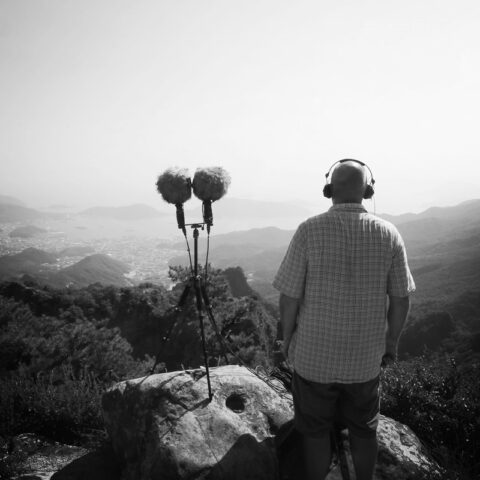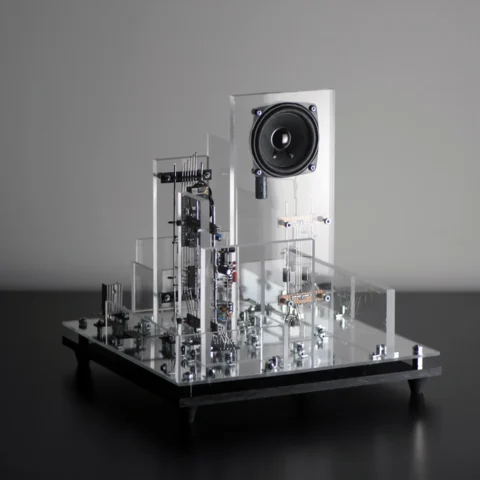Sound designer and recordist Frank Bry is releasing the second package of the Insects HD SFX series, packed with amazing bug recordings. We invited him to do an exclusive article about the making of the library and how he recorded the sounds.
With the recent release of my two insect sound effects libraries, I would like to describe several of the various events and techniques that I used to record a number of the insects we have here in North Idaho. This year was a little different than most. Usually there are tons of bugs crawling and flying around, but this year there was a noticeable difference in the amount of bugs…fewer that usual. Keep in mind that the bugs here really don’t bother people too much. It’s not like we are infested or anything like that so daily life, even without the spraying that happens in cities and suburbs, it’s not too bothersome. I did notice that there were a lot fewer hornets, wasps, stink bugs, and bees and a lot more strange looking bugs. This worked in my favor because I was able to record some great bee sounds without being stung, and I was able to capture some crazy bug sounds from insects I have never seen before.
Most of the recordings in my two collections were not planned. I would be hanging outside, or I may have just pulled into my garage after a trip to town and an insect noise would catch my ear, or I would see them trapped in the garage windows. I am generally ready to quickly grab my recording set-up during the summer and fall. Here is a some background.
I have a large four-car garage that is wide open and has a set of south facing windows. This turned out to be fantastic because all the insects would generally be at those windows trying to get a tan or something. Sometimes there were swarms of flies and at other times just a single deer fly or honey bee. During the summer the garage would heat up and hundreds of flying insects would gather. These bugs were very challenging to record. They move very quickly and act like they are amped on caffeine. Following them around with various microphones was insane. Insects are very unpredictable. Mornings are much cooler in the fall and it makes for slow moving, half asleep bugs that are easy to record. They seem as if they can’t move around too well and tire easily.
The Bugs:
The fly swarms were recorded during the summer when it was hot in the garage. I don’t know where the flies came from but they were numerous and frantic.
The deer fly and house fly sounded the same for the most part even though the deer fly was slightly bigger. They can buzz for a long time so I had plenty of material to work with.
The bee vocalizations and buzzing were also recorded during the summer months. One bee was really crazy. He made all sorts of strange talking noises, especially when I jammed the PCM-D1 windscreen into him. I don’t think he appreciated it. I also was able to get some great recordings of large bumble bees in the flower pots on my deck as well as some bees trapped in a glass jar in the garage.
One evening, sitting on my deck after a sweaty rock recording trip, I was watching the meteor shower over the north sky when I heard this Buzzzzzzz…Thwack! I turned around and saw this huge alien-looking bug on the deck trying to get himself upright. Once up on his legs, he flew towards the porch light. I saw the bug hit the side of the house so hard that one of his wings got damaged.
I sat there for a while enjoying the evening sky, and I kept hearing a buzz and then a soft hit. I got my Sony PCM-D1 and proceeded to follow the bug around. Every time he took off, he flew in circles and crash landed. He ended up on his back waving his legs furiously trying to get himself turned over and ready for takeoff. Now and then, after getting upright, he would scurry away towards the wall and try to climb up. He eventually landed on the recorder and made some cool vocal squeaks. I had a very difficult time getting him off the recorder.
Two years ago I was building a deer fence around my house and in one section I put up temporary fence made out of the black plastic netting. This section of fence was right below the deck and one day a dragonfly flew into the netting. He was flapping furiously. I could hear him from up on the deck. I did not think much of it until later in the day. He was still trapped so I got the PCM-D1 and recorded it. I was able to get really close, maybe too close, but the recording came out great. I then assisted him in making his escape.
The second collection, Flying Insects II, features all new wasps and hornets. The wasps were enjoyable to record. Fall had arrived and it was just starting to get cooler at night. Wasps move a lot slower in the morning and struggle to fly after the cool night. As the sun comes up and begins to shine through the garage windows they either sense the heat or the light and are at the window. They are still not quite awake and were easy to nudge with a stick. They would fall to the floor and start insanely flapping their long wings. Sometimes they landed upside down, and it made for some wonderful long takes of just buzzing. The hornets would just fly in front of the windows without touching the glass and hang there for minutes on end. I was able to record some really great, smooth, steady insect flight sounds.
Flying Insects II has a another new character, a bug that we call the Stink Bug. I do not know the technical name for this bug but they come in late in the summer during the high heat afternoons. They really smell when you disturb them and are really amusing sometimes. They seem to have a problem with navigation. They fly for short distances and not very well at that. If they get close to you, they dive bomb you and cover you with stink. For some time now I’ve wanted to get good recordings of them flying around, but it was always very difficult because their movements are so erratic. Most of the time they are flying straight toward you and you have to duck and get out of the way if you want to remain smelling good. I found that if I flicked them off the side of the house with a fly swatter, they would quickly fly away. The buzzing noise they made sounded like a prop plane pitched up a few octaves. Nice! I was sprayed with their stinky liquid a few times. That part was not fun, but I got the recordings I wanted.
The Gear:
The Sony PCM D-50 was used in wide mode for recording the swarms. I was able to get a great stereo sound field of them frantically trying to get out the window. I use a small 6-inch camera tripod with this and the PCM-D1. With the legs folded in it acts as a pistol grip. To reduce handing noise even more I sometimes wore those construction type gloves. They are comfortable and allow for easy hand and finger movement when using power tools.
I used the Sony PCM-D1 for most of the close up buzzes, vocalizations, and wing flaps. I really love the way this records bug sounds. Its mics are bright and very sensitive. With the very low level insect recordings, I was able to get a great signal to noise ratio and some very clean recordings.
Many times I used the Sanken CSS-5 and Audio Technica AT-835ST on the second collection tracked to a Sound Devices 702. I was looking for some variation in the recordings and was not surprised by how these microphones performed. The CSS-5 was used at the narrow width setting on a bee and a wasp. I was concerned with handling noise because they were dashing around a bit and I had to follow them with the mic. It all came out okay, but I would have rather used the PCM-D1 or AT-835ST for these guys. Speaking of the AT-835ST, I set this mic to mono and chased some bumble bees around the deck as they were moving from flower pot to flower pot to gather the season’s last bit of flower goo. The AT-835ST set to stereo also worked well on the stink bugs. The high end bump in the frequency response of this mic really made the stink bugs fly by’s sound great and in your face.
I added a Sennheiser MKH-416 to my recording rig this summer and had a chance to try it out with insects. I loved this mic for the up close, low volume house fly and honey bee. It has really great top end, it’s light and easy to hold on too when your trying to follow a cranky bug flying around. I had to be careful not to get too close with the proximity effect of this microphone. When I was in the garage I attempted to go without a windscreen but the air movement from some of the insects was hitting the microphne element and thumping.
Well, that’s the sordid details of recording insects this year. I look forward to more alien bugs arriving and hopefully, with Mother Nature willing, a lot more bees.









